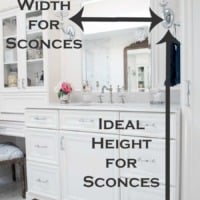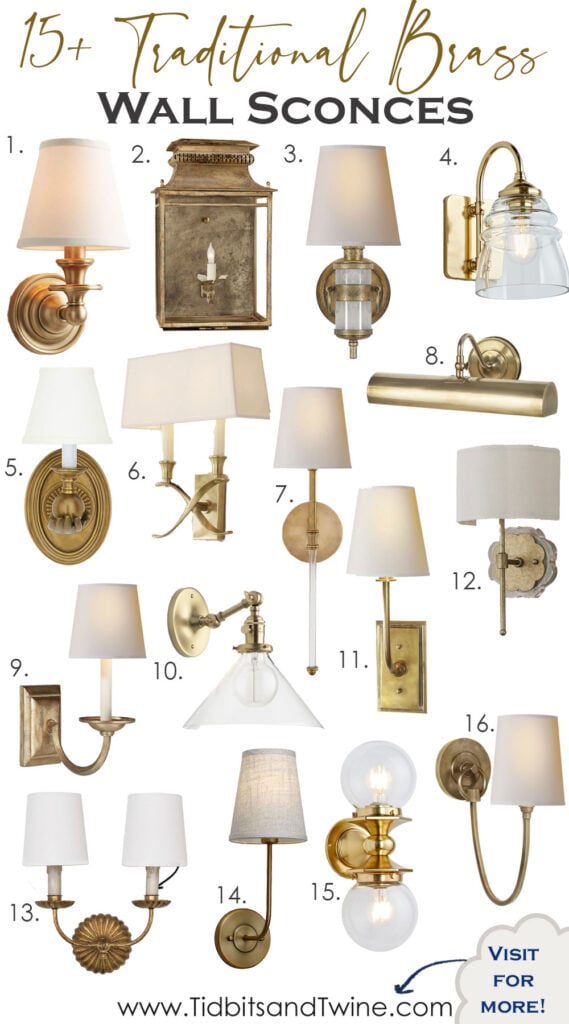Ready to hang some sconces? Let’s make sure you have the right wall sconce height before you wire them up! Here’s a guide for wall sconces in the hallway, entryway, living room, kitchen, bathroom, and even picture lights.
When installing your sconces, you never want to get to a point where it’s time to install the junction box and you have no idea where to put it!
If it’s installed too high, it primarily lights the ceiling and often, makes the bulb visible (which is a no-no). If it’s too low, it lights the floor and the top of the fixture is visible (also a no-no).
Ideally, before installing a junction box, you should know:
- How you need/want the light to function
- The type of sconce you’ll be installing
- The height of your ceilings
While there is no ONE exact measurement, there are definitely guidelines so that you don’t end up with a sconce that just looks “off” or doesn’t function as you need it to. So let’s look at the right wall sconce height for every room of your home! You can use the Table of Contents below to jump to a specific section.
Layers of Lighting
Layered lighting is a technique used to create a balanced and aesthetically pleasing lighting scheme that includes multiple sources of light. The three main layers of lighting include:
Ambient lighting:
This is the foundational layer of lighting that provides overall illumination to a space. It can be achieved with ceiling-mounted fixtures such as recessed lighting, flush mounts, or chandeliers. Ambient lighting should be bright enough to allow for basic tasks and movement in a space, but not so bright that it creates a harsh glare.
Task lighting:
This layer of lighting is designed to provide additional light for specific tasks such as reading, cooking, or working. Task lighting can include desk lamps, under-cabinet lighting, or pendant lights placed over a kitchen island. It should be bright enough to provide adequate illumination for the task at hand without casting unwanted shadows.
Accent lighting:
This layer of lighting is used to highlight and draw attention to specific features of a space, such as artwork, architectural details, or decorative objects. Accent lighting can be achieved with spotlights, track lighting, or wall-mounted fixtures. It should be brighter than the ambient lighting and positioned in a way that creates a dramatic effect without overpowering the space.
Types of Wall Sconces
Wall sconces are a popular type of lighting fixture that attach to walls, providing both functional and decorative lighting. The type of wall sconce you use will affect your “perfect” wall sconce height. There are many types of wall sconces available, including:
- Upward wall sconces: These sconces direct light upward, providing a soft, ambient glow. They are often used for accent lighting or to create a cozy atmosphere in a room.
- Downward wall sconces: These sconces direct light downward, providing focused illumination for tasks such as reading or working. They are often used in bedrooms, home offices, and other areas where task lighting is needed.
- Swing-arm wall sconces: These sconces have an adjustable arm that can be moved up, down, or side-to-side to direct light where it is needed. They are often used as bedside reading lamps or in home offices.
- Candle wall sconces: These sconces are designed to look like traditional candle holders, and often feature decorative accents such as crystals or metalwork. They provide a warm, inviting ambiance to any room.
- Picture lights: These sconces are specifically designed to illuminate artwork or photographs. They are often adjustable to ensure the artwork is properly illuminated without creating glare.
- Outdoor wall sconces: These sconces are designed to be used outdoors, often near entryways or on porches. They are weather-resistant and provide both functional and decorative lighting for outdoor spaces.
- Recessed wall sconces: These sconces are installed directly into the wall, creating a seamless, minimalist look. They are often used in modern and contemporary homes.
- Lantern sconces: A lantern wall sconce is a type of wall-mounted light fixture that is designed to resemble a traditional lantern. It typically features a rectangular or cylindrical frame with clear or frosted glass panels that enclose the light source. While often used as outdoor lights, they can also be used indoors.
The Best Wall Sconce Height by Room
Entryway / Living Room/Hallway Sconce Height
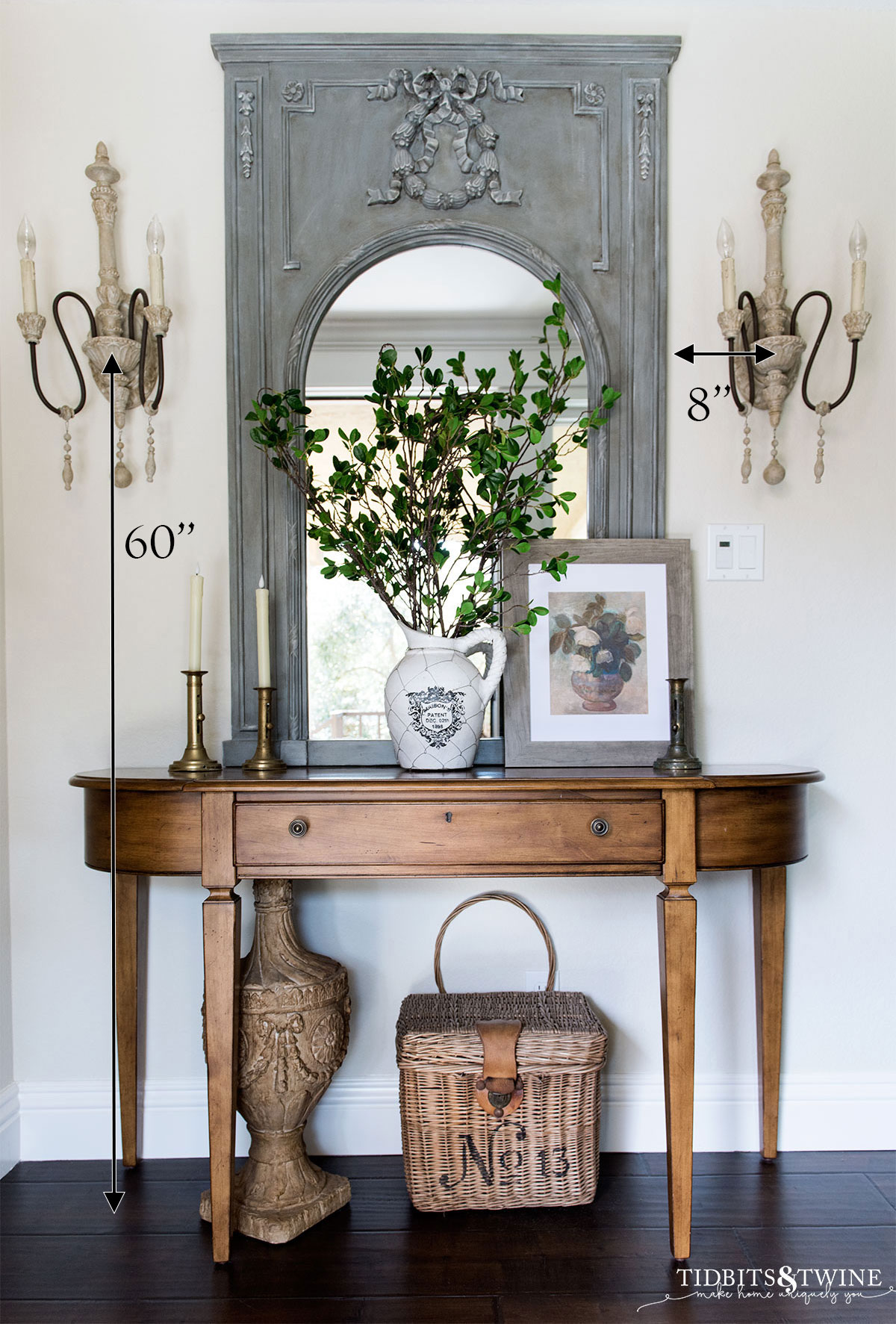
Generally, sconces used in hallways and living rooms are for general, or ambient, lighting:
- Install your sconce about 60″ off the floor to the center of the junction box. Adjust up or down depending on whether your sconce is an uplight or downlight.
- While the goal is for the sconce to be eye-level, try to avoid the light shining directly in the eyes.
- If hanging multiple sconces, space them about 6′ apart on center. You can space at 8′ if your space is larger or hallway is longer.
- Stay at least 6′ away from corners, doors, windows, etc.
- If placing sconces on either side of artwork or a mirror, place your junction box no less than 6″ away from the frame and no more than 12″. In my entryway above, the center of my sconce is 8″ away from the mirror frame.
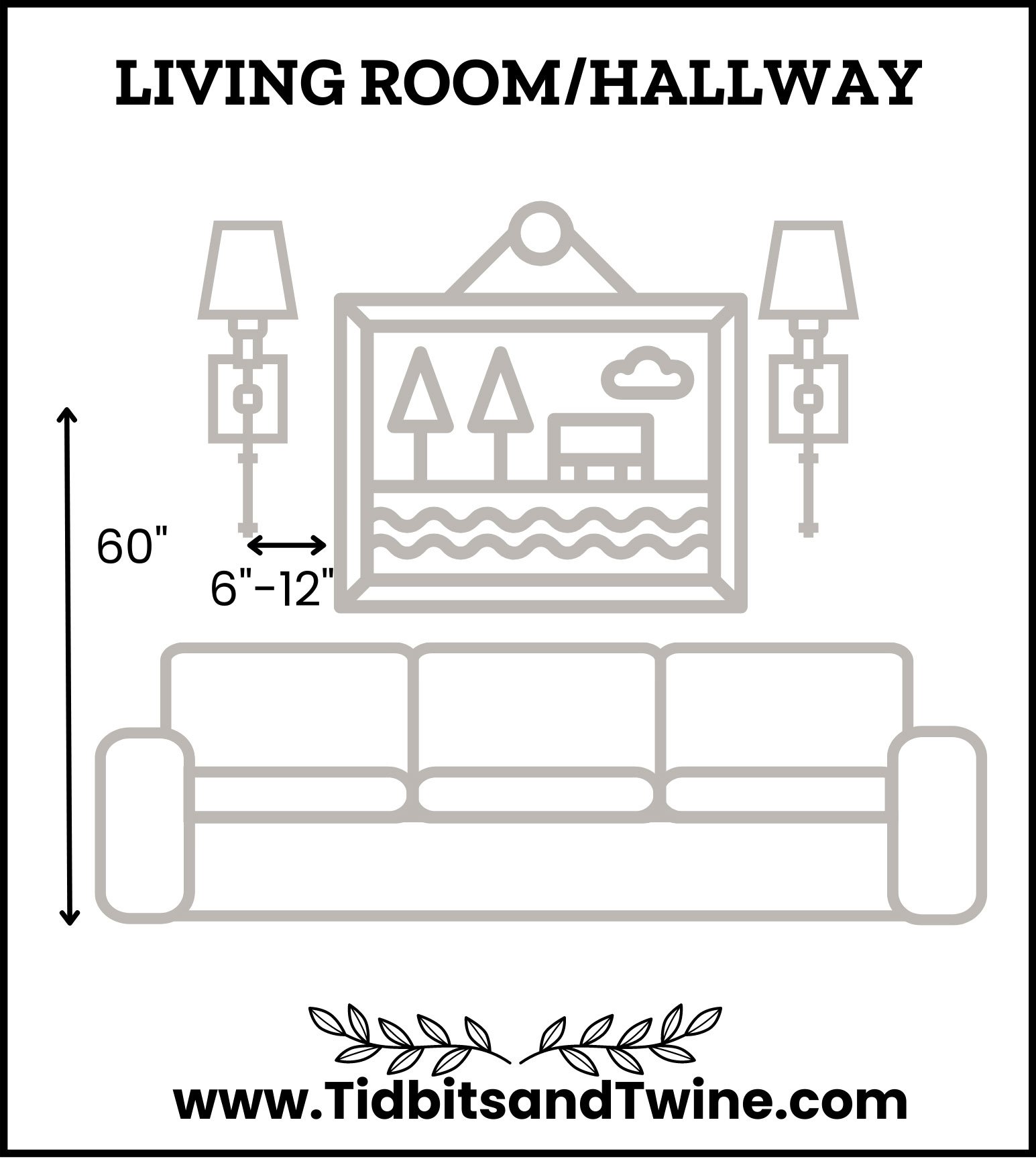
Bedroom Sconce Height
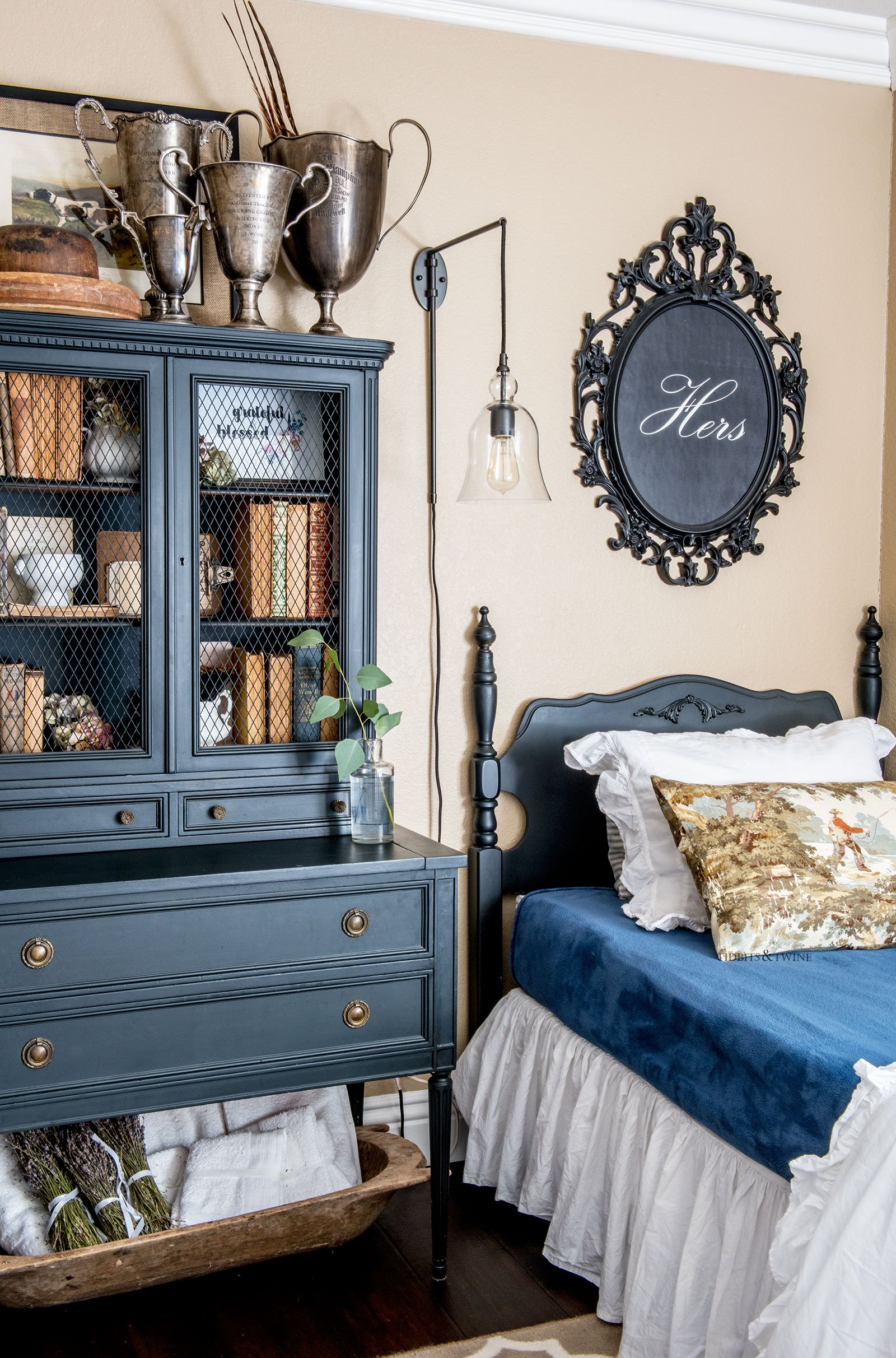
Bedside sconces tend to be used more for task lighting, so it’s important that the light be close enough to the bed to be both convenient and usable.
- You can measure 30″-36″ above the top of your mattress for the height OR sit up in your bed and place the sconce just a few inches higher than your shoulder.
- Ultimately, the sconce will be around 60″ from the floor, but the above helps take into account your specific bed frame and stature.
- If you are a nighttime reader and need the light from the sconces, place them about 12″ away from your bed frame.
- Should you want your sconces to serve as ambient light, you can center them if you want a more balanced look.
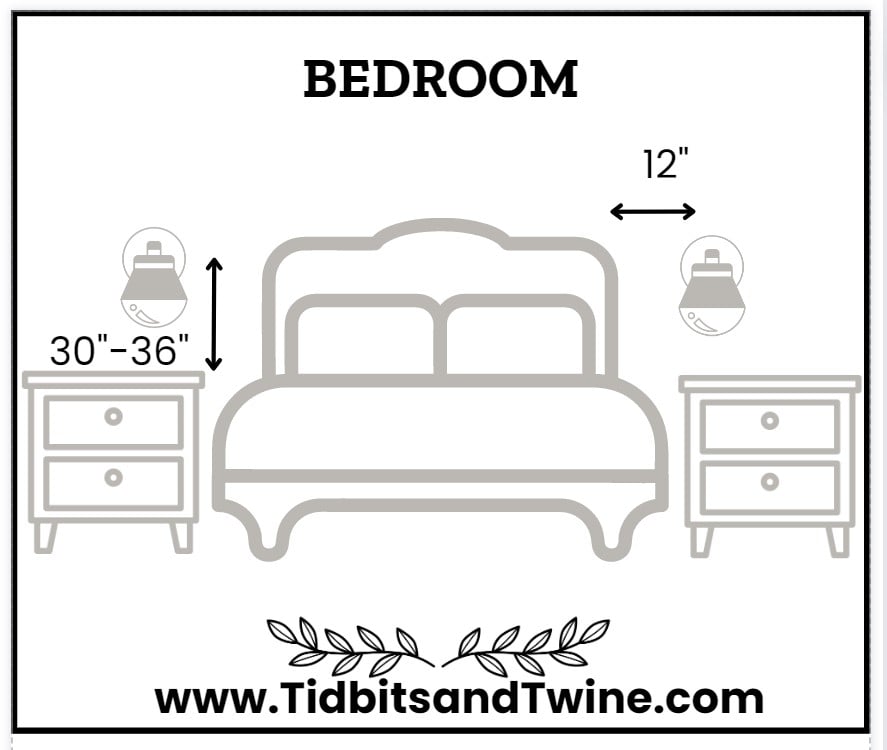
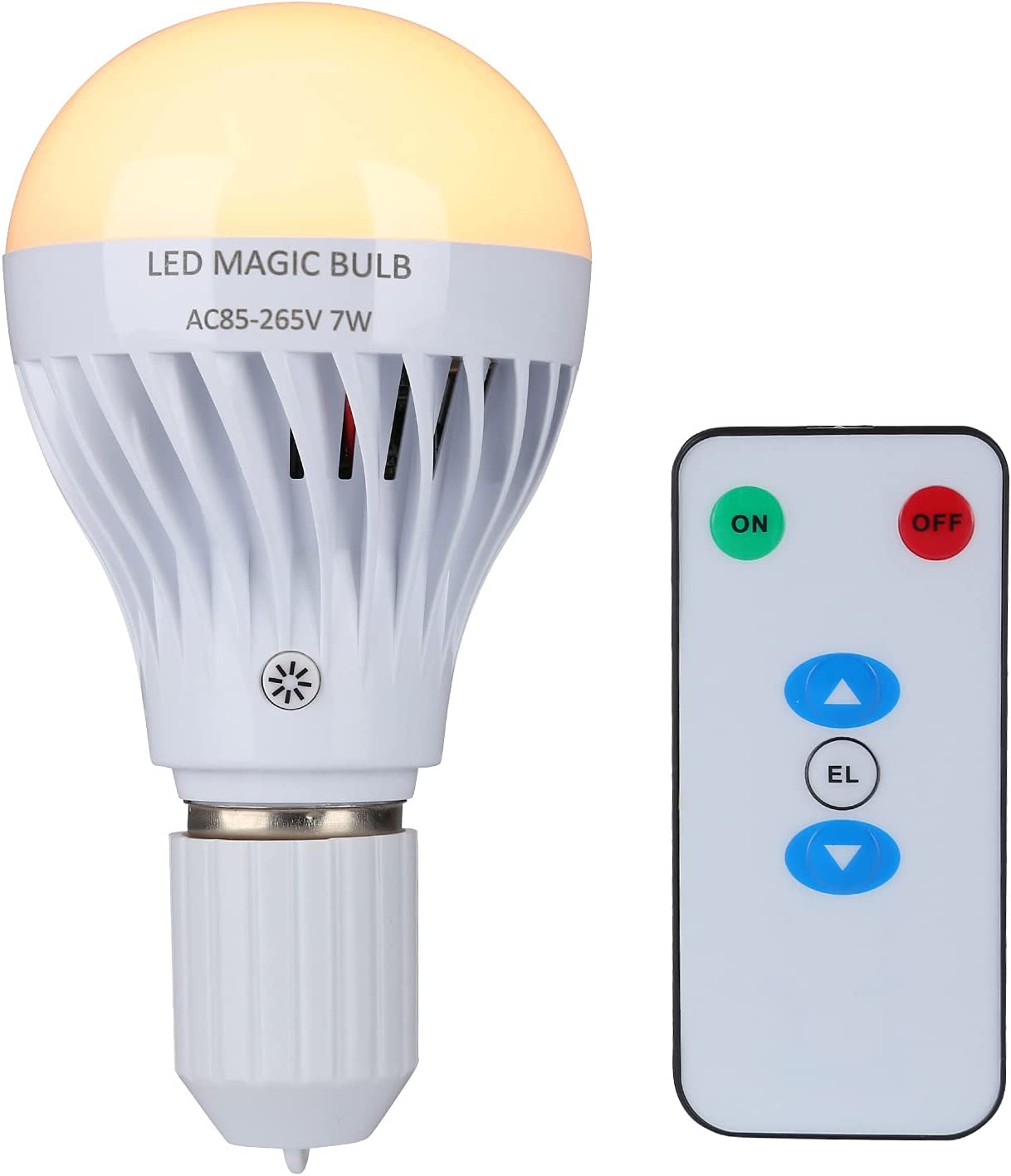
If you have a hardwired sconce but don’t want to hardwire it, you can use a rechargeable light bulb! I purchased this one.
Kitchen Sconce Height
- If you have sconces flanking a hood or action as ambient lighting on the wall, aim for around 60″ from the floor, or 24″ above the counter.
- For a sconce that acts as a task light over the kitchen sink, put it about 6″ above your window frame. You want it to feel connected to the window frame without crowding it.
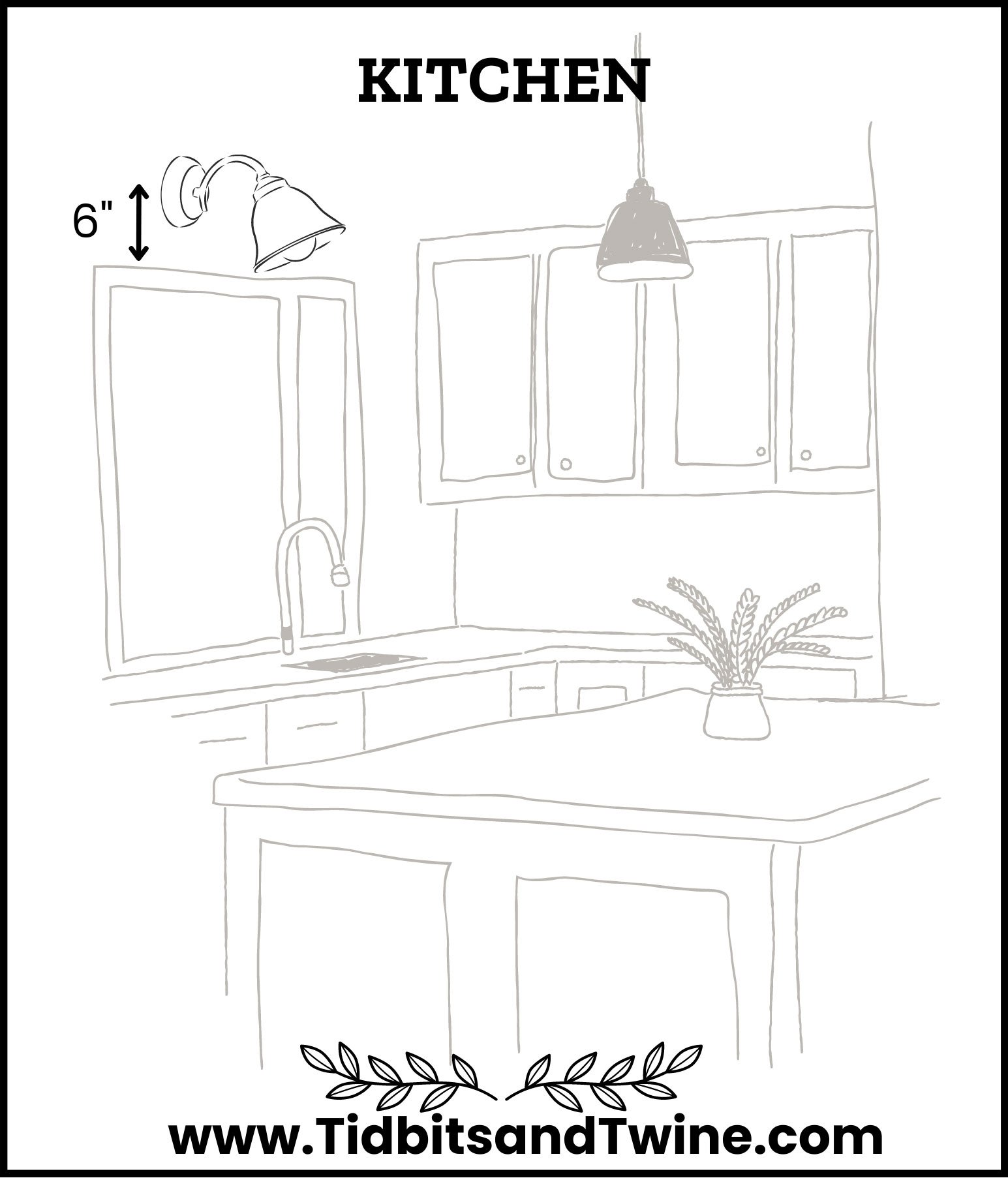
Picture Light Placement
A picture light is accent lighting. I have one above my Frame TV but it’s just for show because there’s no need to light a TV…but I tend to be a form-over-function kind of gal…Lol!
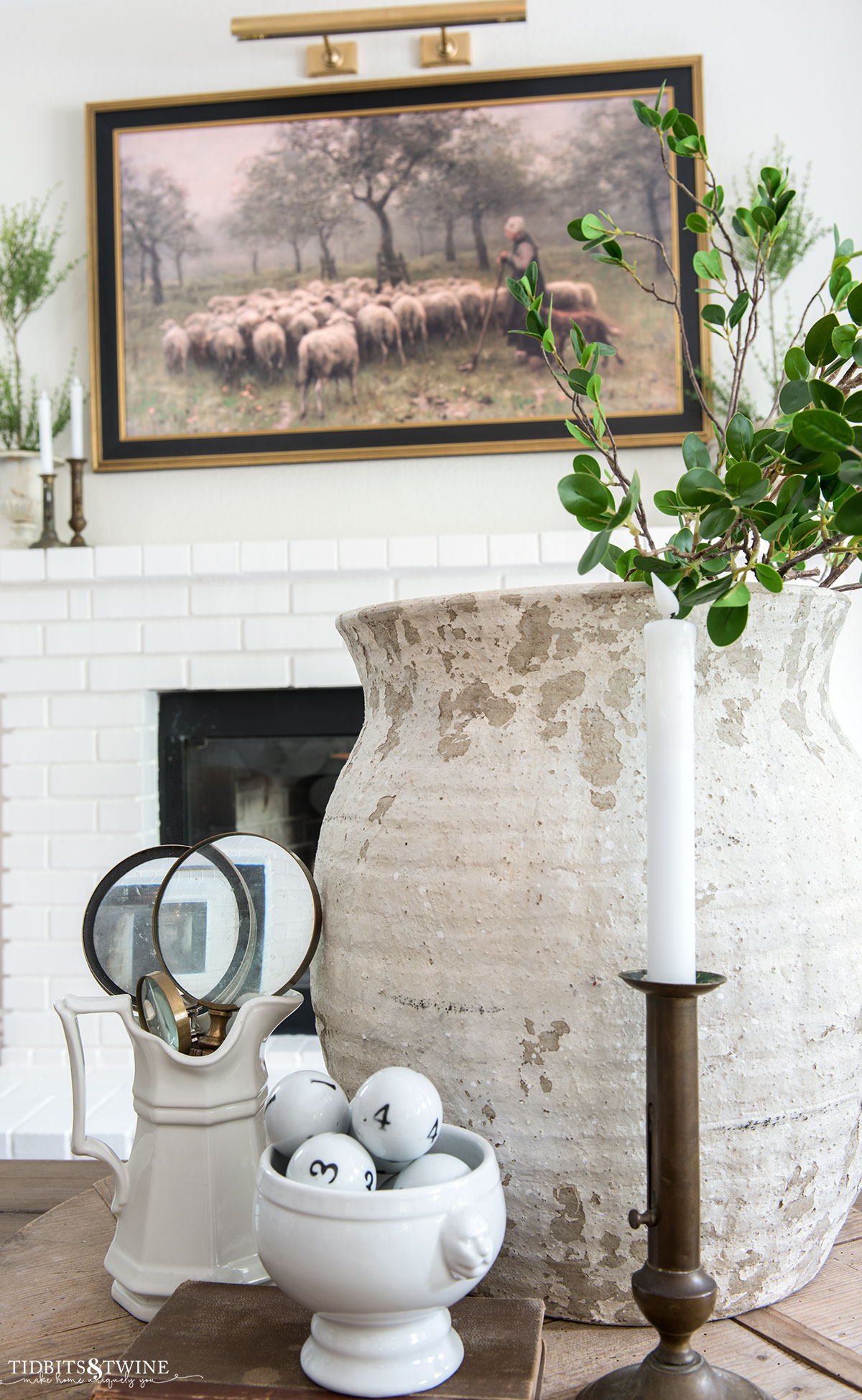
- You want the light to evenly wash over your picture frame. Aim for about 6″ above the frame of the art to hang the light.
- Always center your art light on the frame.
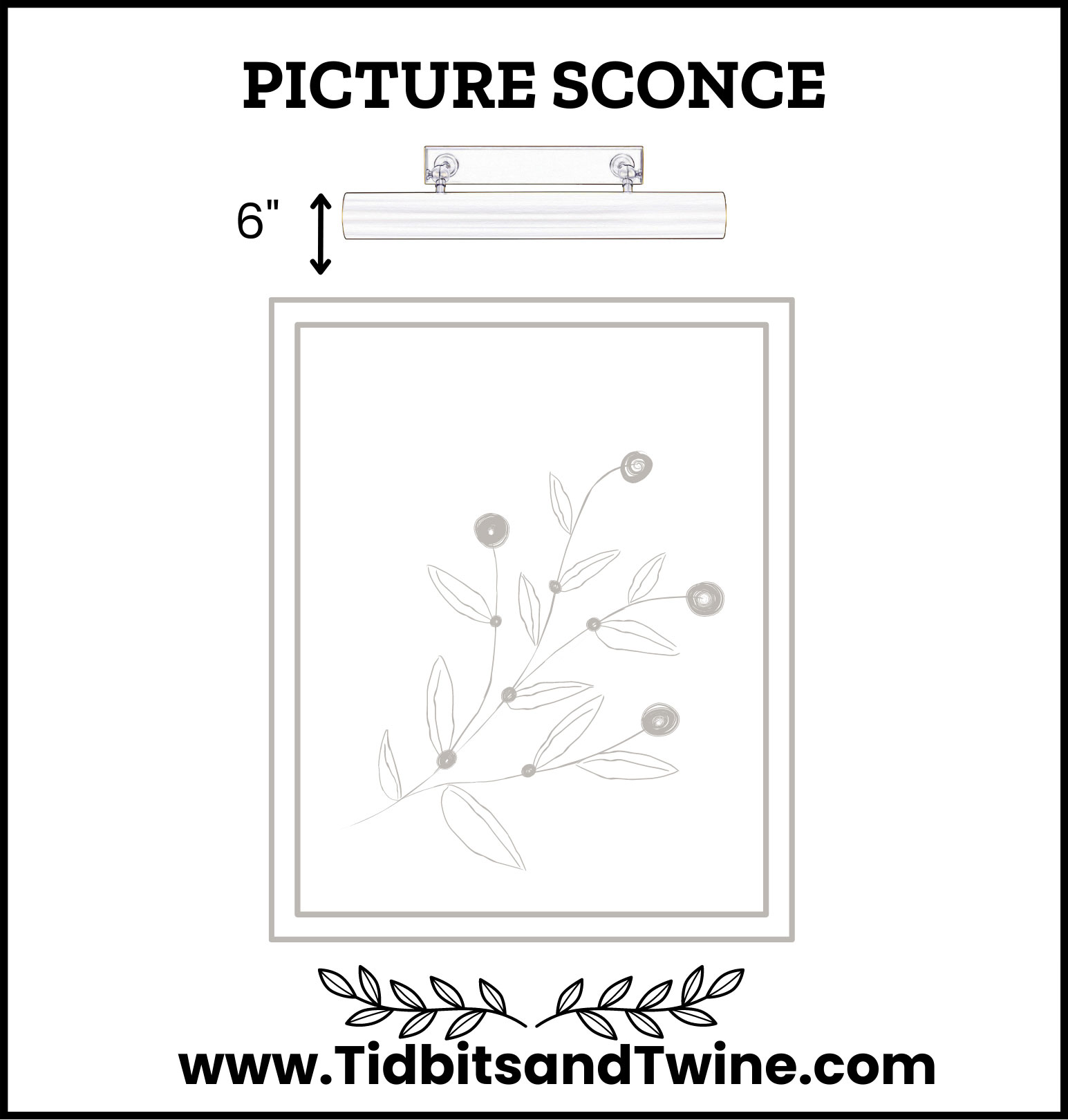
Bathroom Sconce Height
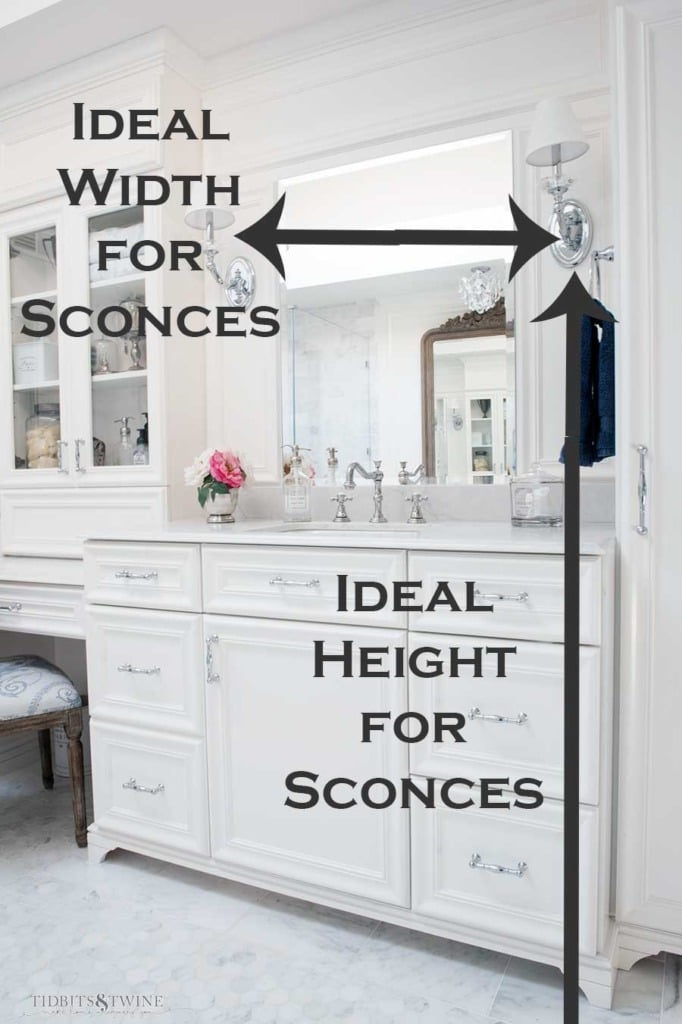
WHERE SHOULD BATHROOM SCONCES BE PLACED?
Sconces should be spaced about 36″-40″ apart for ideal lighting. The variation in the distance takes into account the size of your mirror, as well as the location of studs.
WHAT HEIGHT SHOULD SCONCES BE HUNG?
Sconces should be hung 60″-72″ from the floor. The variation in height accounts for differing vanity heights, types of sconces, uplighting versus down, etc. so a good rule of thumb is that the center of the sconce should be about eye level.
Also, ideally, you don’t want to be able to see the bulb (for sconces with shades), so hold them up to where you think is the desired height and then adjust as necessary.
For my vanity, I have trimmed panels on the back wall, so my sconces sit at 65″ on center and are 40″ apart. I chose this height so that I could adhere to the Rule of Thirds when placing them on the panel. In design, the Rule of Thirds basically means breaking a wall into three equal sections vertically and horizontally. In this case, my sconces are 1/3 of the way down my paneled wall.
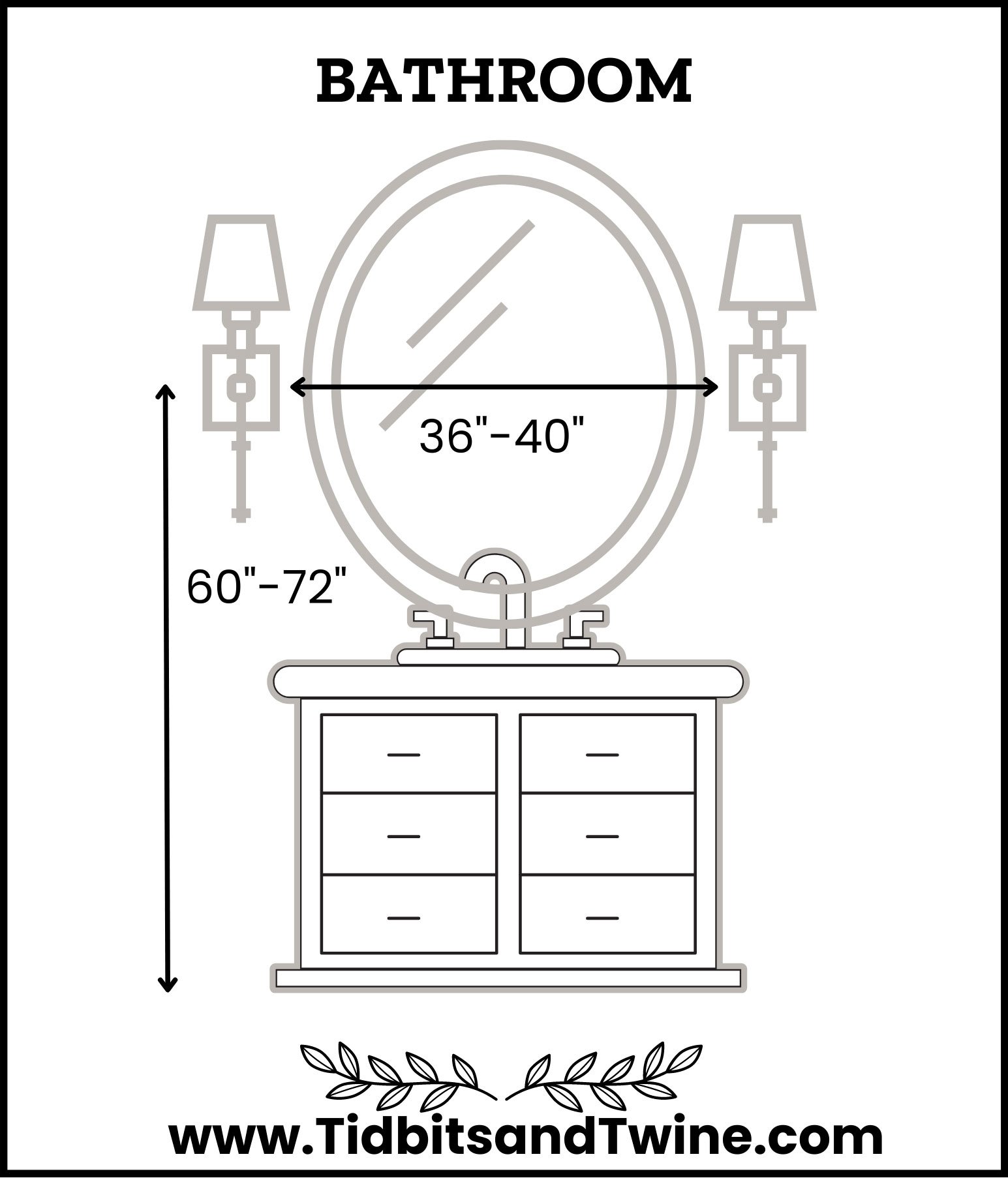
Want more bathroom details? Check out my Guide to Bathroom Measurements!
Additional Tips & Tidbits
- The best wall sconce height will depend on your lighting needs and type of wall sconce. Use the guidelines above and adjust as necessary.
- It’s best to have your sconces before you choose your junction box location. That way, you can use the guidelines above as a starting point and adjust based on your actual sconce.
- Always place all sconces in one room at the same height – never stagger the height
- Adjust your sconce up or down if you find that the bulb is glaring directly in your eyes
- Take into account the sconce’s canopy. For example, uplights tend to be mounted slightly higher than downlights, but canopy ends up in the same place.
- If you don’t have an electrician, consider using a plug-in wall sconce. I’ve rounded up some of my favorites here.
- You can always use a hardwired sconce with a rechargeable lightbulb
Favorite Brass Sconces
I’ve rounded up some of my favorite traditional brass wall sconces. You can find them here:
Favorite French Wall Sconces
If you love old-world charm, you might enjoy these sconces that I curated:
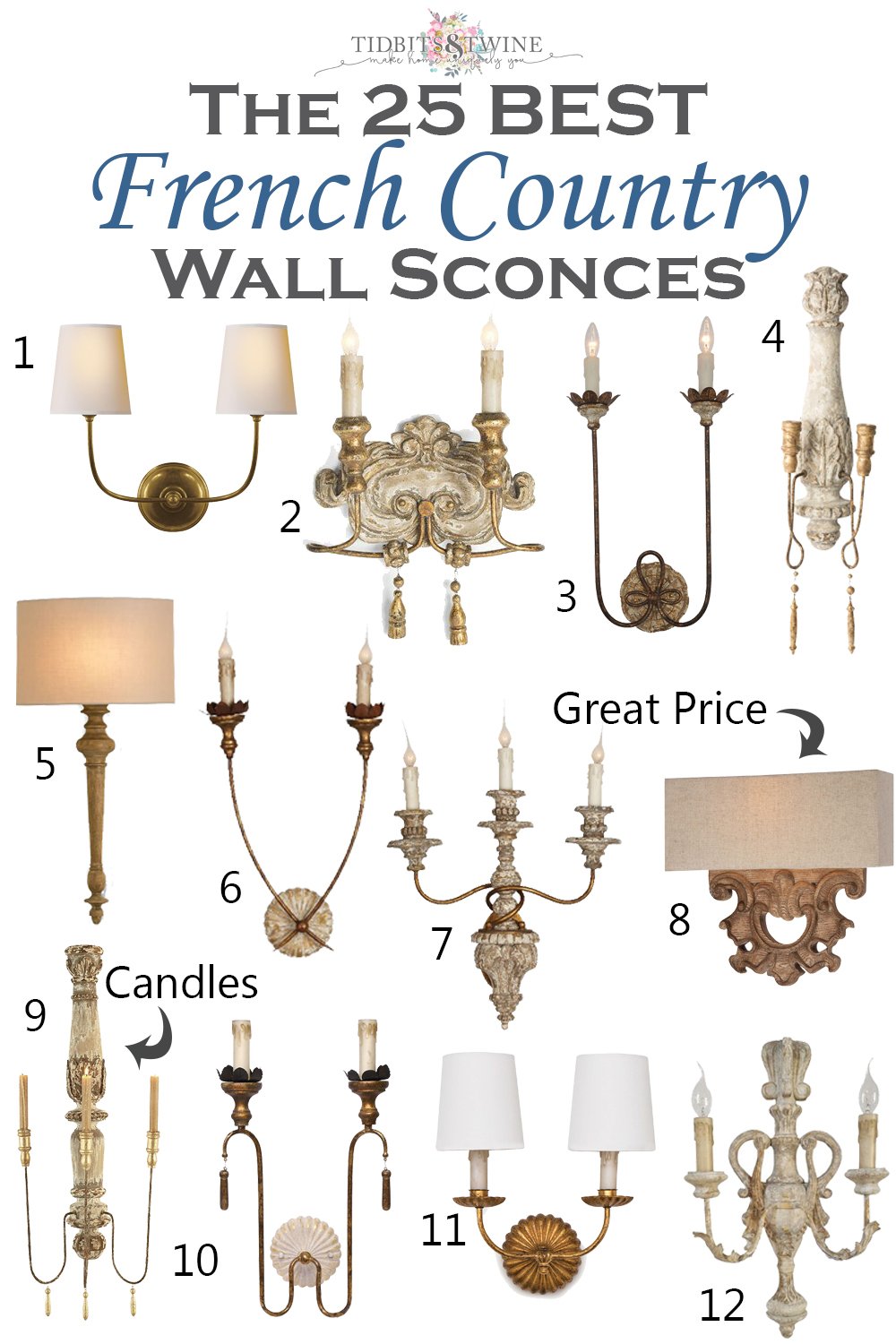
More Decorating Rules
- 25 Need-to-Know Decorating Measurements for a Beautiful Home!
- Layering Rugs: Everything You Need to Know to Embrace This Beautiful Look!
- Coffee Table Dimensions – How to Choose the Right Size
- A Guide to Throw Pillow Sizes & Arrangements
- Design Guide: How To Determine The Chandelier Height Above A Table

Join the Community
Let’s keep in touch! Get exclusive artwork plus the latest news delivered directly to your Inbox!

